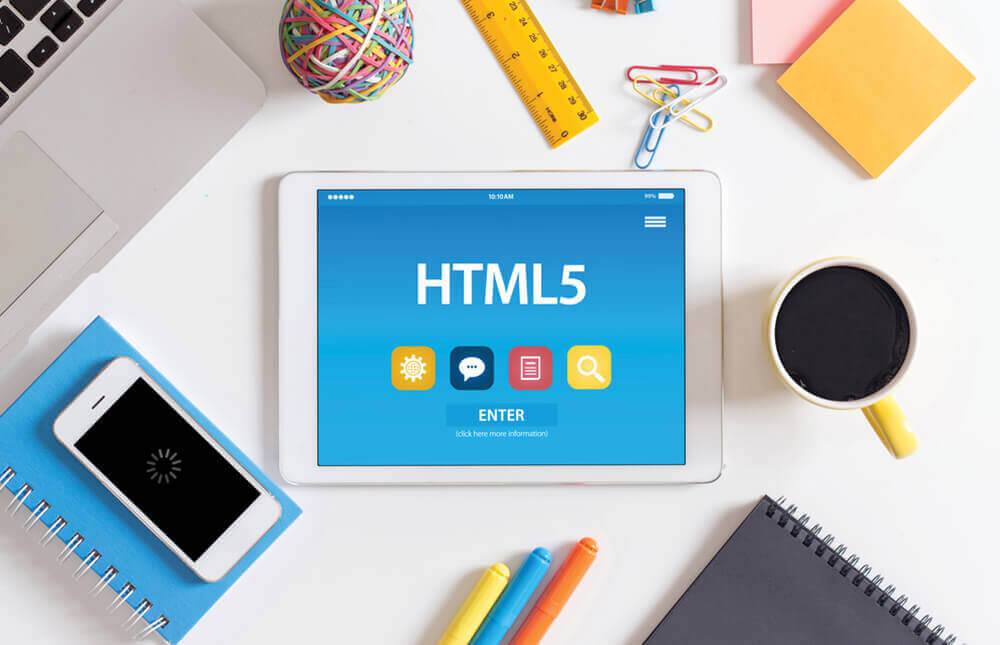Blitz News Digest
Stay updated with the latest trends and insights.
HTML5 Development: Where Code Meets Canvas Magic
Unleash creativity with HTML5! Discover how to blend code and canvas for stunning web experiences in our latest blog. Dive in!
Understanding the Power of HTML5 Canvas: A Beginner's Guide
HTML5 Canvas is a powerful web feature that allows developers to draw graphics and animations directly within a web browser. It provides a 2D drawing surface that can be manipulated with JavaScript, allowing for the creation of interactive and visually engaging applications. This makes it an essential tool for game development, data visualization, and artistic projects. The canvas element opens up a world of possibilities, enabling beginners to experiment with shapes, colors, and images, providing a rich hands-on experience with web development.
Getting started with HTML5 Canvas is quite simple. First, you need to create a canvas element in your HTML file using the following syntax:
<canvas id='myCanvas' width='500' height='500'></canvas>Once the canvas is set up, you can access its context through JavaScript to begin drawing. Here are some basic drawing operations that you can perform:
- Drawing Shapes: With methods like fillRect(), strokeRect(), and beginPath(), you can create rectangles, circles, and other shapes.
- Adding Text: You can add text to your canvas using the fillText() method, allowing you to create interactive and informative graphical applications.
By mastering the fundamentals of HTML5 Canvas, beginners can unlock a new level of creativity in their web projects.

10 Creative HTML5 Canvas Projects to Spark Your Imagination
Are you looking to enhance your skills with HTML5 Canvas? Here are 10 creative projects to spark your imagination and help you explore the full potential of the canvas element. Each project offers unique challenges and opportunities to learn about graphics, animation, and interactivity. Dive into the world of web development with these inspiring ideas!
- Interactive Game: Create a simple game that allows users to control a character using keyboard events.
- Data Visualization: Build a dynamic chart to represent data visually, making it easy for users to comprehend.
- Paint Application: Design a virtual canvas where users can draw and share their artwork.
- Animated Background: Create a mesmerizing background animation that brings your website to life.
- Customizable Digital Clock: Develop a clock that allows users to customize its appearance.
- Weather Dashboard: Use canvas to display current weather conditions in a creative format.
- Image Editor: Build a basic image editing tool with filters and effects using canvas features.
- Virtual Pet: Design an interactive pet that users can feed and play with.
- Particle Simulation: Create an engaging simulation of particles that reacts to user inputs.
- Infographic Animation: Combine graphics and animations to present information in an engaging way.
How to Optimize HTML5 Canvas for Better Performance and Experience
Optimizing HTML5 Canvas for better performance starts with understanding how the rendering process works. One critical approach is to minimize the number of draw calls. Each time you call a drawing function, it incurs overhead, so grouping your drawing operations can lead to substantial performance gains. For instance, use requestAnimationFrame to schedule your rendering tasks efficiently and avoid unnecessary redrawing. Moreover, employ off-screen rendering techniques by utilizing off-screen canvases to prepare your graphics before displaying them, thus reducing the load during the main rendering cycle.
Another essential factor is the management of image assets. Optimize image sizes by using appropriate formats and resolutions; spritesheets can be an excellent solution for reducing server requests and improving loading times. Additionally, consider clearing the canvas efficiently—using context.clearRect(0, 0, canvas.width, canvas.height) correctly can prevent flickering and enhance the overall user experience. Combining these strategies will not only lead to better HTML5 Canvas performance but also improve the interactivity and visual responsiveness of your applications, ensuring a delightful experience for your users.